UK tree expert issues 'unknown' pest threat warning
- Published
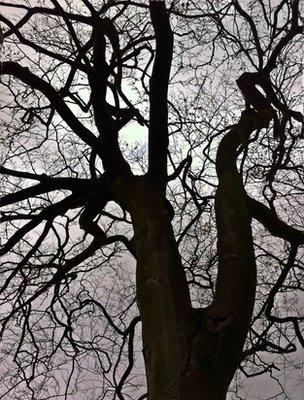
The biggest threat facing UK trees is a disease that is both unknown and unexpected, Dr Slawson said
A tree expert has said the biggest threat facing UK trees is likely to come from a disease currently unknown to science.
The warning came as a leading UK citizen science programme launched a tree health monitoring project, external.
Tree officers suggest urban trees, already under stress from city living, are among the most susceptible.
Last year's arrival of ash dieback threatens to change the nation's treescape forever, ecologists say.
"Firstly, it is important to say that is very difficult to prioritise what are the main threats," explained David Slawson, head of plant health public engagement at the Food and Environment Research Agency (Fera).
"But I would always say the main threat is 'unknown'."
Dr Slawson added: "It may sound slightly alarming, but the likes of Phytophthora ramorum, external was not defined by science when it started causing problems.
"It could be an unknown disease that could be the next big thing and that is why putting generic measures in place that aim to protect against everything are so vital."
One of those measures is a formal scientific process called Pest Risk Analysis (PRA), external, he told BBC News.
"So there is a very well established international procedure on how you do assess the risk of an individual pest," he said.
As well as safeguards put in place by plant scientists within Fera and the Forestry Commission, Dr Slawson explained that the European Plant Protection Organization (EPPO), external was continually monitoring the movement of potential threats to Europe's flora.
EPPO also publishes Pest Alerts, external, which acts as an early warning system and often forms the basis for scientists to exchange data and research at the monthly meeting of the EU Plant Health Standing Committee, external.
Now, another dimension has been added to the array of monitoring methods - citizen scientists.
Fera is one of the partners in the Open Air Laboratories' (Opal) latest survey, which focuses on tree health.
Opal is was designed to get people outdoors and provide a chance to get involved in scientific research.
Its director, Dr Linda Davies, said: "Tree health is one of the most important surveys Opal has developed so far.
"Whilst learning about local trees and gathering lots of interesting information, local people can also contribute their findings to a national research programme investigating the condition of the nation's trees and the factors affecting them."
Bleak expectations
Scientists are expecting this summer to reveal that ash dieback will have extended it reach across the landscape.
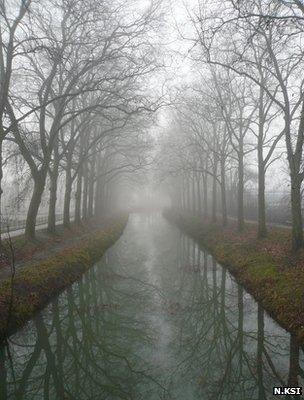
Disease is expected to kill the plane trees lining France's Canal du Midi
The omens are not promising. This week saw the first confirmation of an outbreak of Chalara fraxinea disease in the wider environment in Wales, external.
"Once again, it brings into sharp focus the ongoing threat our trees and woods are facing and highlights the need for a stringent plan of action to protect them," said Austin Brady, head of conservation at the Woodland Trust.
"Ash dieback is just one of the many diseases and pests already in the country with many more just across the border in Europe."
Keen for early detection of new cases of ash dieback, the Forestry Commission has posted a video on its website to help people identify infected trees during the spring, external.
The Commission said the video was designed to help people spot tell-tale signs on ash trees, which are late coming into leaf compared with other species.
"We are particularly interested in suspected cases in counties where it has not been found so far," Dr John Morgan, head of the Commission's Plant Health Service.
He added that August and September were the best months to look for symptoms of dieback because by the autumn infected leaves could be confused with leaves that were naturally changing colour.
Although the temporary ban on ash imports remains in force, the government issued a statutory plant order, external in January that required people to notify officials if they planned to bringing ash, sweet chestnut and plane trees into England.
How ash dieback could threaten Britain's wildlife
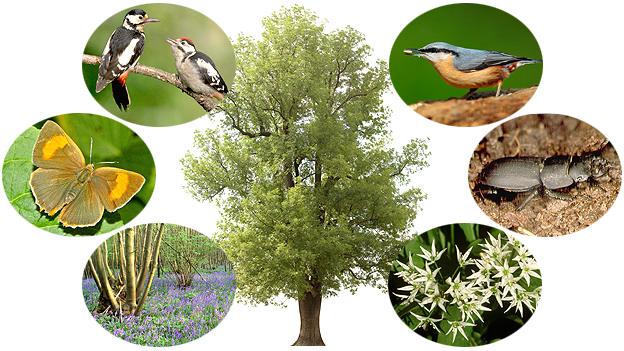
Britain's population of 80 million ash trees provides shelter and food for a wide range of wildlife, mostly birds and insects. The species' loosely-branched structure means plenty of light reaches the woodland floor, allowing a variety of plants to grow beneath them.
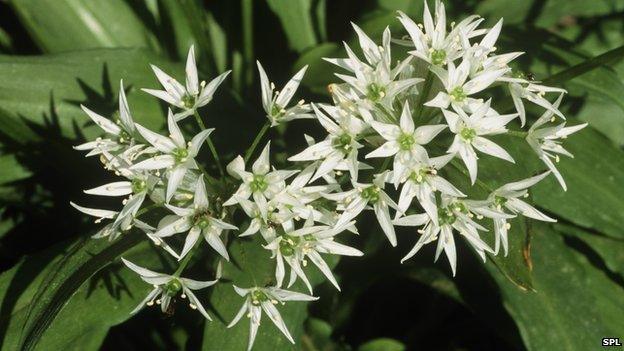
Wild garlic (ramsons) is among the plants that thrives beneath the ash tree. Others include dog's mercury, wood cranesbill, wood avens and hazel. Because ash bark is alkaline, the trees also support a wide range of lichens and mosses and attract snails.

Carpets of bluebells are often seen under and around ash trees. Norfolk’s Lower Wood, in Ashwellthorpe, famous for its spring display of bluebells, is among those areas where ash dieback disease has been discovered.
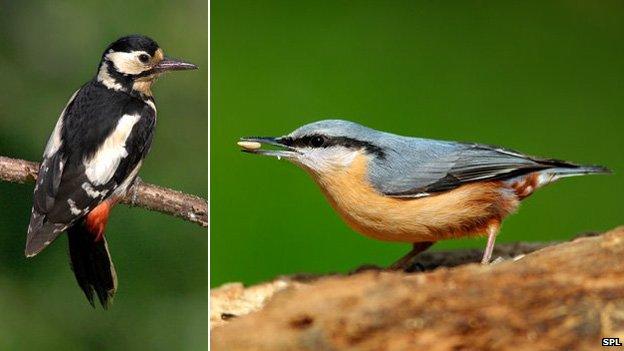
A rich ground layer beneath the ash means plenty of food for birds such as warblers, flycatchers and redstarts. Hole-nesting birds, such as owls, woodpeckers and the nuthatch, are also frequent visitors.

More than 100 species of insect are also known to live on ash. At least 60 of the rarest have an association with the tree – mostly beetles and flies. Because ash is very long-lived, it can also support specialist deadwood species, like the lesser stag beetle.
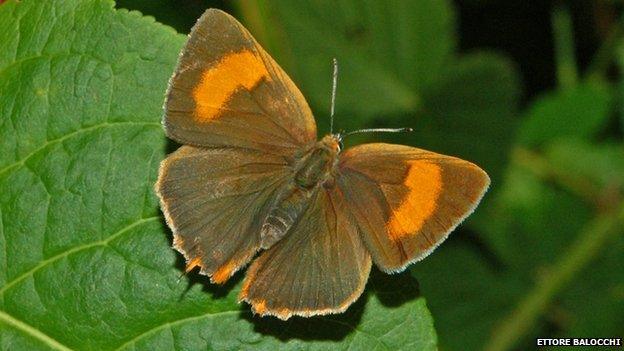
The brown hairstreak butterfly, the largest of the UK hairstreaks, is also a frequent user of the ash. They congregate high in the trees for breeding. Ash also supports a wide variety of moths. Source: The Wildlife Trusts
The Horticultural Trades Association (HTA) wants the government to go further and ban imports of the three tree species, all of which have been the victims of potentially devastating infections overseas.
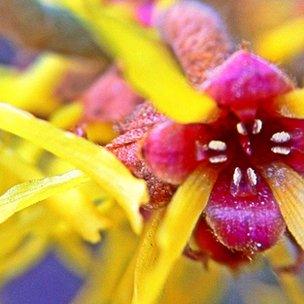
Researchers hope the Opal tree survey will encourage people to take a closer look at nature
The arrival of ash dieback in the UK was in February 2012 when a consignment from a nursery in the Netherlands was confirmed to be infected with the disease.
The HTA called for ash imports to be banned in 2009 after seeing the impact of the disease in Denmark.
Recently, the HTA said that sweet chestnut tree imports should also be banned as concern grew about the spread of a usually fatal blight, external (caused by the fungus Cryphonectria parasitica) through much of mainland Europe.
The UK had a close escape in late 2011 when the disease was identified at nine locations but the infected trees were destroyed before the fungus became established in the surrounding environment.
It had previously never been recorded in the UK on the species that the Romans are understood to have originally introduced to Britain.
In late 2011, the HTA also called for the introduction of a ban on plane tree imports.
A fungal disease, known as canker stain of plane trees and found in mainland Europe, external, has a history of leaving a trail of devastation in its wake.
It was first recorded in the US during the 1930s and, in the space of a few decades, had wiped out most, if not all, London plane trees (Platanus × acerifolia) - a popular street tree - in cities along the east coast, from New York state to Louisiana.
It is believed to have been brought to Europe via crating material, made from infected wood, used by the US military during World War II.
Watching and waiting
French researchers fear the highly infectious disease will wipe out all of the estimated 42,000 plane trees that line the banks of the nation's 240km (150-mile) Canal du Midi - a UN world heritage site - by the middle of the next decade.
Jake Tibbetts, chairman of the London Tree Officers Association, says the arrival of canker stain of plane trees in the UK would be deeply worrying.
He said: "When you talk about the heritage of trees and what we have gained from the planting done by the Victorians, my biggest concern is that as those big, landmark trees had to removed en mass, very quickly, we would suddenly be left with a very different urban landscape - one that would be very problematic to replant.
"When those trees were planted [in Victorian times], the soil was in better condition, pavements were not as impermeable as they are now.
"And there was not the same level of competition above and below ground that those trees now have," he told BBC News.
"London plane trees, a decade ago, were thought to be as tough as old boots, with no real pests or diseases to threaten them.
"They were considered fantastic trees to plant and would grow anywhere; now we are having to question whether London plane trees are suitable trees to plant for the future."
- Published27 October 2012
- Published3 September 2012
- Published20 October 2011
- Published9 November 2012
- Published22 January 2013